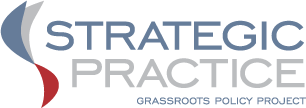Donate
Donate to Grassroots Policy Project now through Network for Good
Search
Dialog
GPP honors the life and work of Stuart Hall. Check out our Hall-inspired commentary and check our Home page for updates.
Daily News & Analysis
08/25/2016 - Michael Corcoran, Truthout
08/25/2016 - Joseph A Todd, Red Pepper
08/25/2016 - SHAUN RICHMAN, IN THESE TIMES
08/25/2016 - Paul Waldman, The Week
08/25/2016 - Dan La Botz, New Politics
Commentary
09/25/2015
07/21/2015
04/01/2015
Creative Commons
Licenced by Creative Commons. The documents on this site are free for all to use noncommercially, with attribution. In addition to giving us credit when you use or reproduce our materials, we also ask that you let us know how you are using them.

